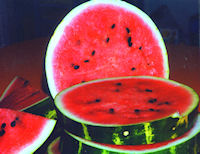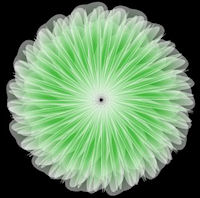- Empowers pupils to take ownership of their learning as active learners
It is no longer about the teaching but rather about the learning. The distinction reflects the important notion that pupils should be actively engaged in the learning process. Pupils are given the opportunity to enquire, investigate and choose from a variety of resources. They can direct the focus of their learning according to their interests and prior knowledge. Pupils’ motivation and expectations increase and so does their confidence in engaging with maths skills and concepts.
- Promotes investigative and problem-solving skills
Creative mathematics is all about developing problem-solving skills which enables pupils to solve unfamiliar mathematical problems creatively. Pupils realise that there might be more than one possible solution to solving a given situation and learn how to adopt diverse strategies towards problem-solving which best suit their learning styles, capabilities and situation. Pupils are also given the time, space and resources to explore mathematical skills and concepts and can devise their own path to a solution.
- Establishes connections to real life making learning more relevant
The notion of a classroom has been subject to strong competition with the real world beyond its walls, as well as the instantly accessible virtual world. In today’s information-based and highly globalised society, it is simply absurd to teach without acknowledging real data that is surrounding and bombarding us every second. Teaching and learning should be ever more connected and contextualised in real life circumstances. We cannot have pupils ask; “Why are we learning this?”. The more we establish links between learning and real life, the better can pupils apply their knowledge and skills, and regard the learning as valuable and relevant. Learning tasks should be more based on real life situations, enabling learners to tap into their prior knowledge whilst becoming more engaged with the task at hand. Such examples of realia include; menus, TV schedules, informative websites, transport information, published newsletters, promotional leaflets, sports websites, etc.
- Presents opportunities for collaborative learning and communication
Creative learning tasks entail the exploration of diverse learning modes which include collaborative group work. Pupils learn to work with other learners who have different learning abilities and together attempt to find a strategy on how to produce something or solve a given task. Throughout this process, the pupils are actively engaged in dialogue. They learn to verbalise their mathematical thinking and to consolidate their use of mathematical vocabulary. Pupils learn to enage in self-assessment and they evaluate their best capabilities, and assign different tasks of the project to specific members of the group in order to reach their final goal. Such tasks allow pupils to develop their social and communication skills, which prepares them for the future. It is the teacher’s responsibility to form functional group clusters by having diverse learners grouped together. Groups should be kept small, so that every student remains engaged and feels important to the rest of the team. One important tip is to assign specific roles within the student’s abilities, and whose duty is necessary in order for the group to reach their final objective or produce their desired outcome.
- Fosters initiative, innovation and creative thinking
Much focus is being placed upon the terms initiative and creativity, as part of the list of transversal skills required in the 21st century. Society needs citizens who are able to take initiative, who are good decision-makers, problem-solvers and who are able to be creative and think outside the box. Exploring mathematics creatively involves providing open-ended opportunities for our pupils to work collaboratively and to design innovative strategies and solutions to a given situation. This practise allows pupils to foster such important skills which allow them to thrive and to be better equipped for tomorrow’s world.
- Explores maths through technology
Our children are constantly surrounded by technology especially mobile touchscreen devices. From a very young age they seem to hold an instinctive disposition to interact with screens and to respond to visual cues. This exposure is enforced both in households as well as in other locations outside the home, such as shops, restaurants, shopping centers, etc. Technology has revolutionized the concept of education and has shifted the learning process to one which is more self-directed, creative and also game-based. Exploring maths creatively acknowledges and values the potential and vast resources which technology can provide us. Through technology, pupils learn various skills such as language, creativity, social skills, mathematical thinking, and problem-solving. Technology also provides models and opportunities for pupils to explore their learning through an appealing and relevant medium. One great example of creative maths through technology is the soaring use of coding, which can be carried out either using apps (such as online, mobile or tablet apps) or else through floor robots such as the Pro-Bot. Pupils have the possibility to learn how to programme, design, engage in content creation and problem-solve whilst exploring different skills related to maths such as shape, measure, fractions, angles and position. Coding skills are considered as a language in itself and it forms the basis of logical reasoning. Pupils can be given the opportunity to create their own problem-solving tasks which they can then share with their peers or other pupils from other schools.
- Supports pupils with diverse abilities
Adopting this approach towards exploring maths in real life, also serves to cater for the different students who are diverse in terms of learning abilities and preferences. Such an approach can be considered inclusive and through the continuous representations of mathematical situations as drawn from real life, pupils will have the chance to explore maths from different perspectives while the learning becomes more appealing. The variety of learning modes, enables most students to participate and to remain engaged on the task.
- Nurtures mathematical thinking and reasoning
Fundamental to mathematical learning is the ability to think and reason mathematically. It is important to present opportunities whereby the students are able to explore the process of problem-solving through mathematical thinking and reasoning. These situations also enable the learner to become better at communicating their thinking and in finding the appropriate vocabulary to explain their reasoning. Students are also able to observe that there might be more than one possible and reasonable solution to a given problem. Mathematical reasoning can be exemplied verbally, visually or through models.
- Blurs the boundaries among different curricula areas
One very positive aspect about exploring maths creatively is that it does not only establish a more dynamic relationship among the teacher and the students, but it also establishes links with other learning areas, creating a multi-disciplinary approach to learning. Teachers can collaborate into providing project-based learning scenarios whereby students work in groups and explore a given situation or location and require a myriad number of skills in order to reach their goal or final product. Students learn to establish connections between maths and language, art, history, science, technology, physical education and other aspects of the curricula.
- Heightens understanding and retention
Hands-on experiences allow students to apply their learnt skills and concepts in practice. Such opportunities provide pupils with a repertoire of experiences which they can recall and allows them to become more confident at applying their knowledge in the future. Through hands-on practice, learners are able to self-assess where they require further support. These activities provide a meaningful context to learning and promotes retention of learnt maths skills and concepts.
Throughout my past years as a maths support teacher, I have had the possibility to visit many primary schools in my country. These visits implied opportunities to collaborate with class teachers and together explore innovative mathematics pedagogies, which appeal to different students and which attracts them towards participating in engaging maths activities. I have gained a lot of insight into the type of quality education which our pupils require not only during their young age but also to increase their participation in tomorrow’s world. We as teachers realize, that we are preparing our learners for a world which is rapidly changing, and for future jobs which are yet to be created. Our teaching has to remain abreast with what technology presents to us and valid to today’s rising generations. It remains, however, our duty to instill in our pupils a sense of love for learning and creating, and to recognize the relevance, inter relatedness and beauty of education in the real world beyond the classroom.



